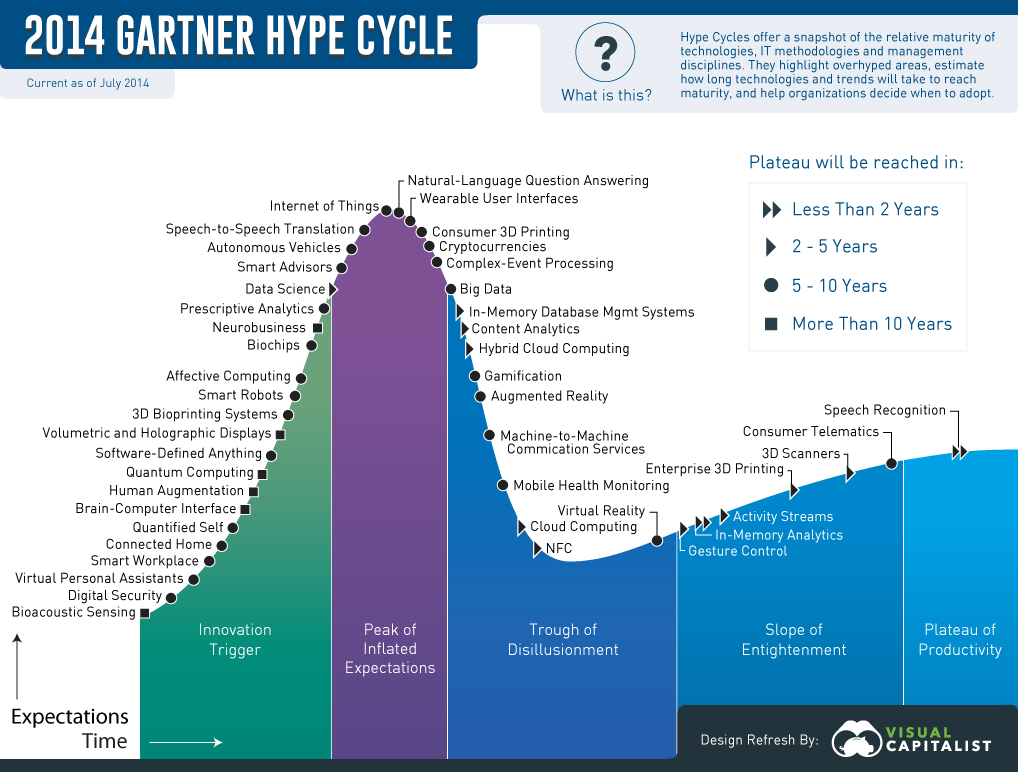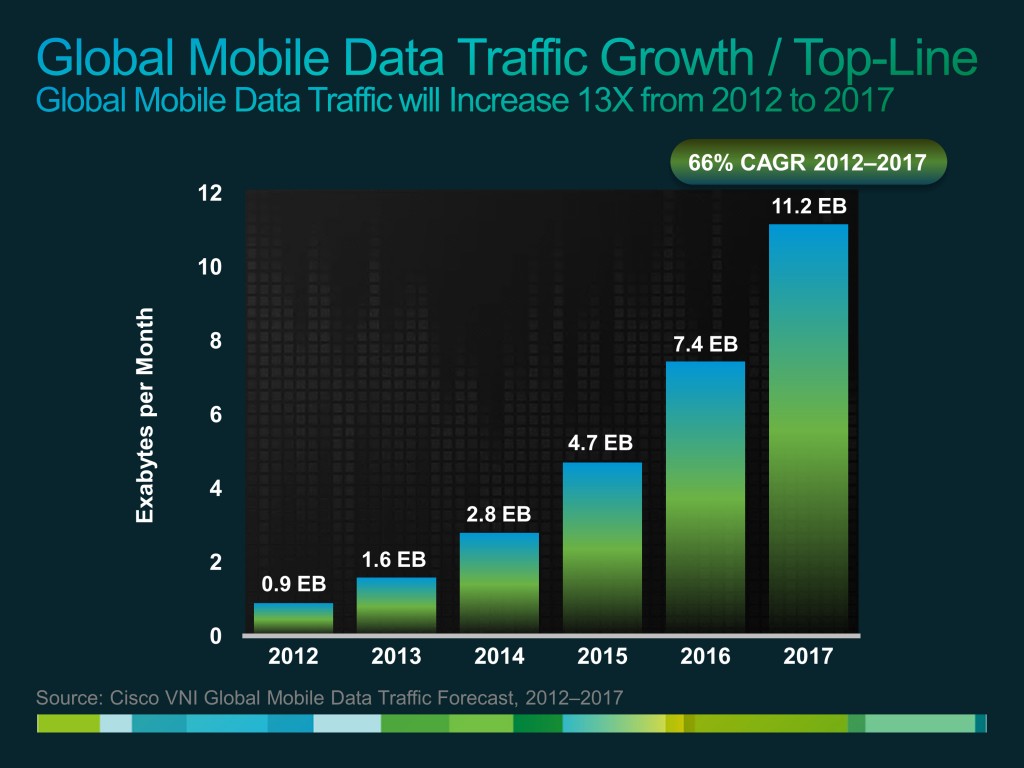Eric Schmidt & Jared Cohen, in their book “The New Digital Age” describe typical future morning for a professional like this:
There will be no alarm in your wake-up routine – at least, not in the traditional sense. Instead, you’ll be roused by the aroma of freshly brewed coffee, by light entering your room as curtains open automatically, and by a gentle massage administered by your high-tech bed. You’re most likely to awake refreshed, because inside your mattress there’s a special sensor that monitors your sleeping rhythms, determining precisely when to wake so as not to interrupt a REM cycle.
A little later:
There’s a bit of time left before you need to leave for work – which you’ll get to by driverless car, of course. Your car knows what time you need to be in the office each moring based on your calendar and, after factoring in traffic data, it communicates with your wristwatch to give you a sixty-minute countdown to when you need to leave the house.
How does this world look? Futuristic? Or do you think we are pretty close to this future? I think we are some where is the middle – our world should look like this in 5 – 8 years from now! All thanks to “Internet of things” or “Web of things”, whatever you call it.
What is Internet of Things (IoT)?
Internet of things refers to network of objects, each of which has an unique IP address & can connect to internet. These objects can be people, animal and day to day devices like your refrigerator and your coffee machine. These objects can connect to internet (and to each other) and communicate with each other through this net, in ways which have not been thought before.
Imagine a world when every small thing in your home is connected to internet and is speaking to each other – the coffee maker, refrigerator, doors, heating units, your watering system, your weighing scale, your car, mobile phone, watch, TV, your wardrobe, your house cleaning machines, everything on a single network and all interacting and communicating with each other.
If this sounds like a scene from the movie Transformers – its not! It is much closer to reality than you would think.
What can these devices do?
There is no rule which defines what these devices can or can not do. So, it is pretty much open to the imagination of the designers and manufacturers. However, here are a few obvious things, which come to my mind:
- These devices would interact and communicate – to humans or to other machines, as appropriate.
- These devices would have sensors to capture data – it could be your heart beat, your temperature or the traffic in front of the car.
- These devices would be able to compute. Driverless cars would do the route planning and collission avoidance all by themselves.
- Storage of data
- These would have embedded controllers to switch things on and off.
Why is it gaining significance?
Here is how Google search for Internet of things trends in comparison to Big Data. It already has about one-thirds of searches in comparison to Big Data.
So, why is this being searched? I think the best way to answer this is to illustrate a few scenarios and possibilities enabled by this internet of things.
Examples of consumer applications:
- As you approach the door of your home, it senses your presence and automatically unlocks itself. As soon as you close it to go out of home, it asks all the energy units in the house – lighting, heater, stove, refrigerator to go into energy preservation mode. When you come back, the reverse happens.
- Your wrist band senses when you fall asleep and automatically asks your headphones and lights in your room to switch off.
- The sensors in the soil of your garden gauge the level of moisture in soil and accordingly switch the watering unit – efficient watering of plants!
- Health care – Imagine your watch is monitoring your heart rate regularly and notifies you at the first instance of any irregularity. It can also shoot a message to your doctor and near by hospital.
Industrial applications:
- Life of machines – Imagine a train and its track loaded with sensors, which continually monitor their wear and tear. Even before the train hits its destination, you would know the repairs and the changes required. Similarly, you do not depend on the generic guidelines about the life of tracks to replace them. The concept applies to aircraft engines, wind turbines or any heavy machinery you can think of.
- Smart cities – How about designing a city, which is thriving on this data to take decisions on its infrastructure? Which roads should be widened? Which routes need alternatives to ease traffic? What is the right location for a hospital? What should be its capacity? Imagine – all these decisions being made on data and with planning.
I am sure, you get the idea. Basically, Internet of Things (IoT) is set to change how we work and interact with the world in every possible manner.
Hype cycle of Internet of Things:
Hype cycle is a typical representation on how technologies evolve over time. They typically go through Innovation trigger followed by inflation of expectations, trough of disillusionment, enlightenment and finally hitting plateau of productivity. This is the time, when a technology has lived it’s life cycle!
Here is the hype cycle of various technologies in July 2014, as per Gartner:
As you can see, there are various manifestations of Internet of things, which are 5 – 10 years from the eventual plateau. For example – Connected Home, Wearable user interfaces, machine to machine communication services.
What does it mean for data science professionals?
If you are not scratching your head already, have a look at this graph. This is how the data generated through internet of things is expected to explode (at whopping 66% CAGR):
So, Cisco expects the data emitted by all mobile devices to grow 4 times in 3 years! Now, imagine the opportunities it opens up for data science professionals. Here are a few of them, which come to my mind:
- First and foremost, we will need better and more agile infrastructure – the big data of today would become small data of tomorrow.
- How do you marry the data across devices and make sense out of it? Can you marry the data on weighing scale, smart watch and mobile to predict health conditions of a common man? What if we could inform the doctors in advance? What if you can predict the number of doctors required to be on duty day on day? The possibilities are immense.
In simple words, with this explosion in data, we will need more people who can handle this data and make more sense of it.
What are the challenges in realizing Internet of things?
While the picture I painted is definitely rosy, there are a few significant challenges to overcome before we reach there.
- The first question to solve for is how do you get machines from different manufacturers to talk to each other? How do they communicate sensitive customer data across to each other. Who owns the data? Who can use the data? How?
- Communication regimes and design requirements: While the applications are immense, so are the scenarios to use these machines. Each scenario requires a different style of communication – different latency, different frequency, different length of data. For example, a sensor measuring temperature of human body needs to communicate the data once in a while. The driverless cars need to be on their toes every single second!
- Customer Privacy: The proponents of customer privacy would be shouting on top of their voices by now. Internet of things will expose whatever privacy is left today to be exposed – both at personal and industrial levels.
- Information Security: Each of these devices would have their own security challenges. Our PCs, Laptops and mobiles, even after years of efforts still have security challenges. With more devices coming on the internet, this challenge now goes to a different level. Imagine being driven around in a car which is hacked?
End Note:
In this article, I have described the basics of one of the hottest field right now – the Internet of Things (IoT). The space is evolving every week with advancements changing the landscape quickly. It is also a convergence of various hardware and software – something which we have been thinking for long time.
I have also touched upon the implications of this for data science professionals and a few challenges in the domain. These are by no means exhaustive, but just the tip of the iceberg. Hopefully, I have told enough to get you excited about this evolving field.








Thanks Kunal to provide excellent knowledge on IOT. I think Apple Watch is in example of IOT in action.
Thanks Kunal. Indeed a great Article. It opens up our mind on the immense potential underneath data science. Looking for some more articles on this.
Really exciting article just like Hollywood movies we are watching... Encouraging for data science professionals !!